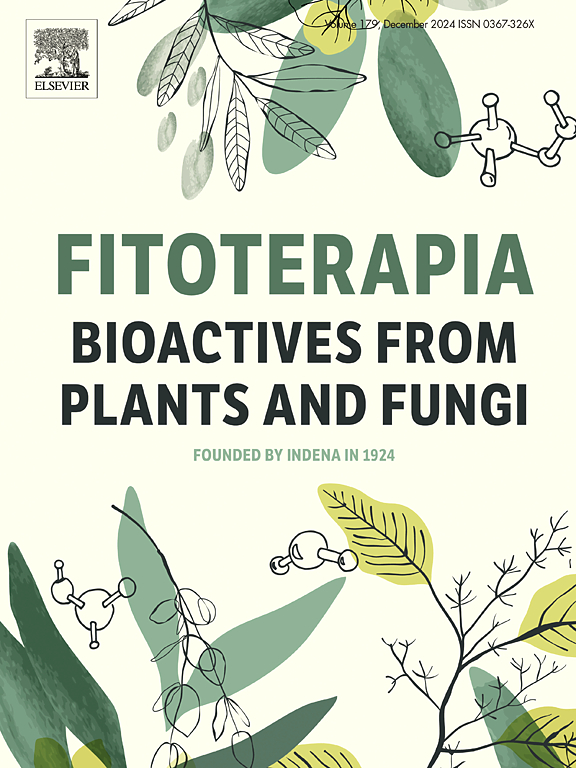山茱萸中原吗啡苷和双吗啡碱类生物碱
IF 2.6
3区 医学
Q3 CHEMISTRY, MEDICINAL
引用次数: 0
摘要
从长柄山药的叶和茎皮中分离得到5个未见过的苯异喹啉类生物碱。其中,alseodaphnine(1)被认为是一种四环重排的原morphinan生物碱。Alseodaphnilarines A, B和C(2-4)被鉴定为原吗啡胺缀合物,而alseodaphnidine(5)代表双吗啡类生物碱。此外,(−)-9,10-二氢头孢拉汀A(6)是首次从天然来源中分离得到,尽管它之前被报道为头孢拉汀A的全合成副产物。另外12种已知的苯异喹啉生物碱(7-18)也被鉴定出来。化合物1 ~ 5的化学结构和绝对构型通过综合光谱分析得到。体外细胞毒实验表明,生物碱14对胰腺癌和乳腺癌细胞株具有中等抑癌活性(IC50为12.6 ~ 21.7 μM)。化合物5对乙酰胆碱酯酶无抑制作用,对丁基胆碱酯酶有选择性抑制作用(IC50为21.2 μM)。此外,生物碱1,7 - 9,14和17与对照组相比,显着延长了秀丽隐杆线虫的寿命,最长可达12%。本文章由计算机程序翻译,如有差异,请以英文原文为准。

Promorphinan and bisaporphine alkaloids from Alseodaphne peduncularis
Five previously undescribed benzylisoquinoline alkaloids were isolated from the leaves and stem-bark of Alseodaphne peduncularis. Among these, alseodaphnine (1) was characterized as a tetracyclic rearranged promorphinan alkaloid. Alseodaphnilarines A, B, and C (2–4) were identified as promorphinan-amine conjugates, while alseodaphnidine (5) represents a bisaporphine alkaloid. Additionally, (−)-9,10-dihydrocepharatine A (6) was isolated from a natural source for the first time, although it was previously reported as a byproduct from a total synthesis to cepharatine A. Twelve other known benzylisoquinoline alkaloids (7–18) were also identified. The chemical structures and absolute configurations of compounds 1–5 were elucidated through comprehensive spectroscopic analyses. In vitro cytotoxic assays revealed that alkaloid 14 showed moderate anti-cancer activity against pancreatic and breast cancer cell lines (IC50 12.6–21.7 μM). Compound 5 demonstrated selective butyrylcholinesterase inhibition (IC50 21.2 μM), with no activity against acetylcholinesterase. Furthermore, alkaloids 1, 7–9, 14, and 17 significantly extended the lifespan of Caenorhabditis elegans by up to 12 % compared to the control group.
求助全文
通过发布文献求助,成功后即可免费获取论文全文。
去求助
来源期刊

Fitoterapia
医学-药学
CiteScore
5.80
自引率
2.90%
发文量
198
审稿时长
1.5 months
期刊介绍:
Fitoterapia is a Journal dedicated to medicinal plants and to bioactive natural products of plant origin. It publishes original contributions in seven major areas:
1. Characterization of active ingredients of medicinal plants
2. Development of standardization method for bioactive plant extracts and natural products
3. Identification of bioactivity in plant extracts
4. Identification of targets and mechanism of activity of plant extracts
5. Production and genomic characterization of medicinal plants biomass
6. Chemistry and biochemistry of bioactive natural products of plant origin
7. Critical reviews of the historical, clinical and legal status of medicinal plants, and accounts on topical issues.
 求助内容:
求助内容: 应助结果提醒方式:
应助结果提醒方式:


